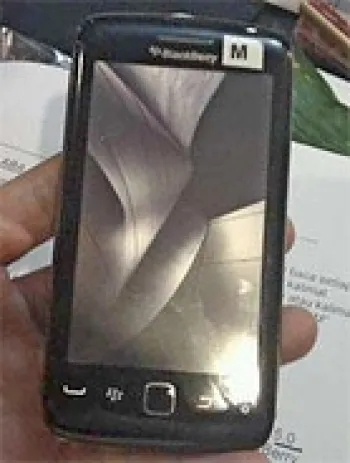BlackBerry 8800 InDepth Review Specs Prices & More

Overview of BlackBerry 8800
The BlackBerry 8800, introduced in February 2007, marked yet another innovative leap for Research In Motion (RIM) into the burgeoning smartphone market. It represented a perfect synthesis of robust enterprise capabilities and personal productivity tools. Released during a time when BlackBerry was synonymous with business communication, the 8800 effortlessly combined its predecessors' tradition of secure email handling with additional features that catered to a growing demand for mobile utility.
Design and Build
At 114 x 66 x 14 mm and weighing 134 grams, the BlackBerry 8800 had a robust build that exuded professionalism. Its dimensions made it a comfortable fit to hold and function with one or both hands. The device sported a traditional BlackBerry design with a full QWERTY keyboard. This keyboard was iconic, not just for its design but for its tactile feedback that enabled fluid typing, a necessary function for business users who relied on speed and accuracy in communication.
The body of the 8800 was constructed with durability in mind. Despite its lack of modern finesse and sleekness, its sturdy casing meant it could withstand the regular rigors associated with travel and daily corporate usage.
Display
The BlackBerry 8800 featured a 2.5-inch display with a resolution of 320 x 240 pixels, offering clarity with a 65K color range. While some might consider the display modest by modern standards, it was more than adequate at the time for viewing emails, documents, and browsing the web. Its size made navigation effective without being cumbersome, striking a balance between functionality and readability.
Network and Connectivity
Equipped with GSM technology, the BlackBerry 8800 supported a comprehensive range of 2G bands (GSM 850/900/1800/1900), ensuring excellent connectivity across regions and networks. For data, it supported both GPRS and EDGE, which were adequate for email communication and basic web browsing during its era.
The device included Bluetooth 2.0, allowing users to connect peripherals such as headsets and hands-free devices. Moreover, the inclusion of a built-in GPS was a significant boon, especially for business travelers requiring navigation assistance within unfamiliar territories.
Performance and Operating System
The BlackBerry 8800 ran on BlackBerry OS, powered by a 32-bit Intel XScale PXA272 processor clocked at 312 MHz. The combination provided sufficient performance for managing emails, messaging, and running essential applications available at the time. The OS was designed with efficiency and security in mind, making it an ideal choice for its primary business clientele.
With a storage configuration of 64 MB internal memory and 16 MB RAM, the 8800 was not meant for heavy multimedia use but was expertly optimized for email and essential application storage. The presence of a microSD card slot allowed users to expand storage, which meant users could manage additional data and extend the device's usability.
Battery Life
One of the highlights of the BlackBerry 8800 was its commendable battery life, afforded by its removable Li-Ion battery. The device’s battery could last up to 530 hours on standby and offered up to 5 hours of talk time. This endurance made it particularly advantageous for professionals who needed reliable communication devices on the go without the constant need for recharging.
Features Without Cameras and Multimedia
Interestingly, the BlackBerry 8800 did not include a camera, which underscored its professional ethos. However, it did support various media-alert types such as vibration, MP3, and WAV ringtones. The absence of a 3.5 mm headphone jack limited direct earphone connectivity, which was a minor inconvenience, but not a significant detractor given the device's primary target market.
Software Features
The BlackBerry 8800 was proficient in handling HTML/WAP/xHTML web browsing and offered excellent email functionality which was the hallmark of the BlackBerry ecosystem. The device's software suite was intentionally crafted to boost productivity, with features that included Blackberry Messenger (BBM), calendar, tasks, and memo pad. Despite the limited app ecosystem compared to contemporary Apple and Android platforms, the focus on core communication and organization tools was unmatched.
Conclusion
The BlackBerry 8800 was emblematic of Blackberry’s dominance in the smartphone market during the mid-2000s. Although discontinued, it remains a noteworthy chapter in mobile technology's history for setting high standards in business communication devices. While the absence of features like a camera and modern multimedia options may seem a limitation today, the device exceled within its designed purpose—providing efficient, secure, and robust tools for business communication on the go.
Priced at about 120 EUR at launch, the 8800 was not only affordable for businesses but also justified its cost by delivering value through its reliable and focused feature set. It catered to a niche market looking for professionalism above entertainment, a market well-recognized by RIM during that period.
Main Features of BlackBerry 8800
- Compact dimensions and lightweight design (114 x 66 x 14 mm, 134 g)
- QWERTY keyboard for efficient typing
- 2.5-inch display with 320 x 240 pixels resolution
- GSM connectivity with GPRS and EDGE support
- BlackBerry OS with 32-bit Intel XScale PXA272 312 MHz processor
- Expandable storage via microSD card slot
- Bluetooth 2.0 and GPS positioning
- Long battery life with up to 530 hours of standby time
- HTML and WAP 2.0/xHTML browser support
- Available in a classic silver color
BlackBerry 8800 Main Disadvantages
- No camera available on the device.
- Lacks WLAN (Wi-Fi) connectivity.
- No 3.5mm headphone jack for audio output.
- The screen-to-body ratio is quite low (~25.7%).
- Limited internal memory with only 64MB storage and 16MB RAM.
- No radio support on the device.
- Uses a miniUSB connection, which is not widely used today.
- Discontinued device, no longer supported with updates or services.

View Also
More Phones
All Rights Reserved +14266 Phones © Mobilawy 2025

























